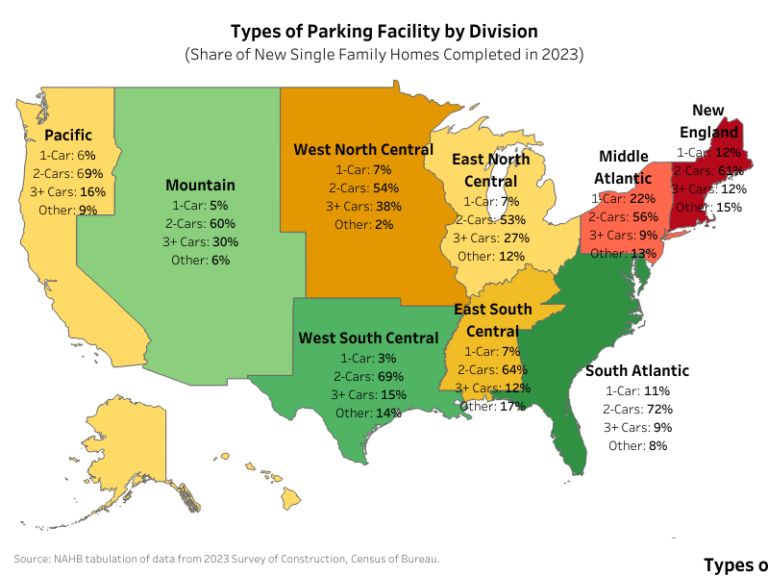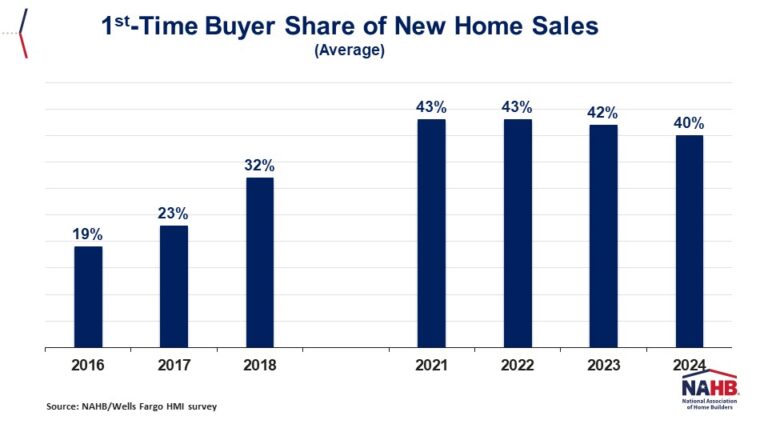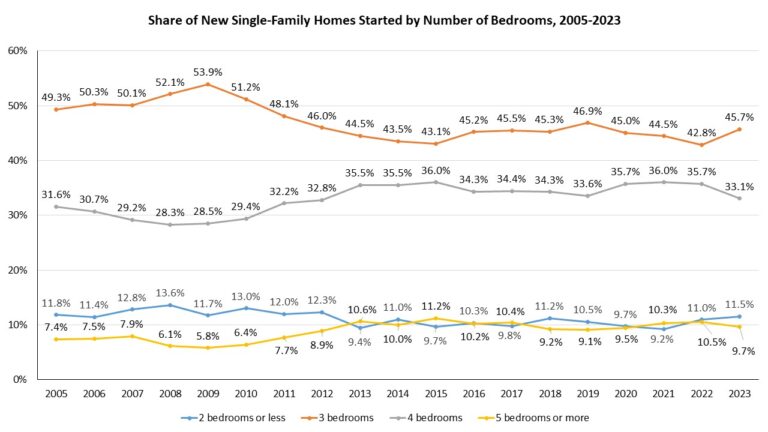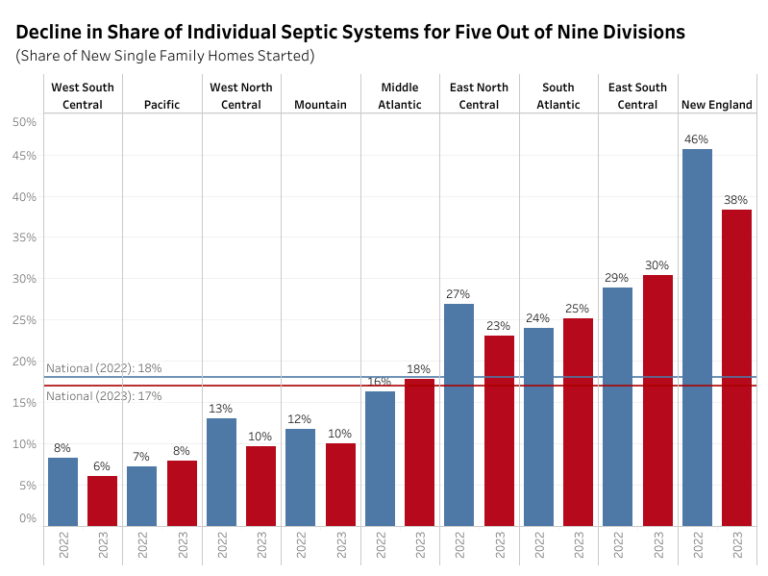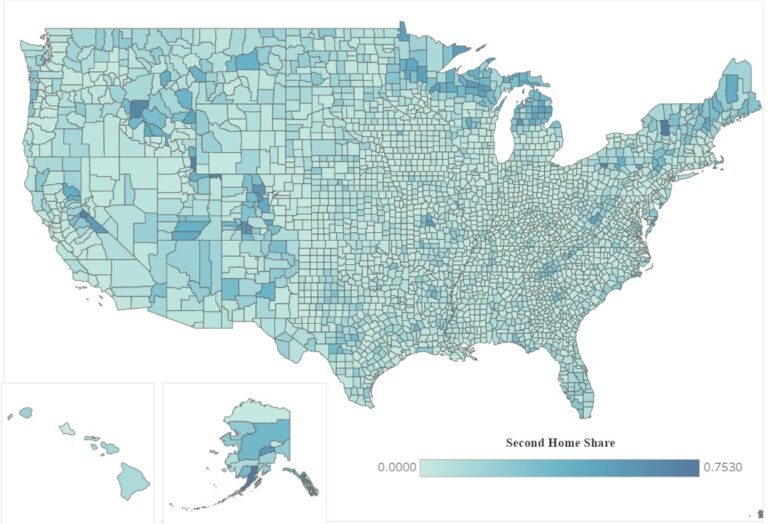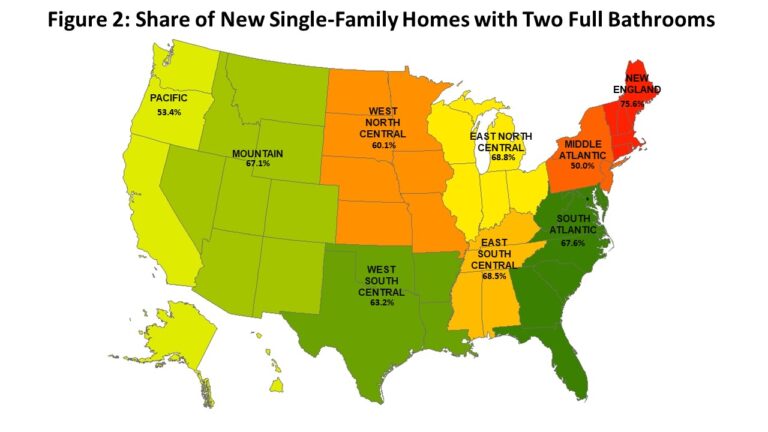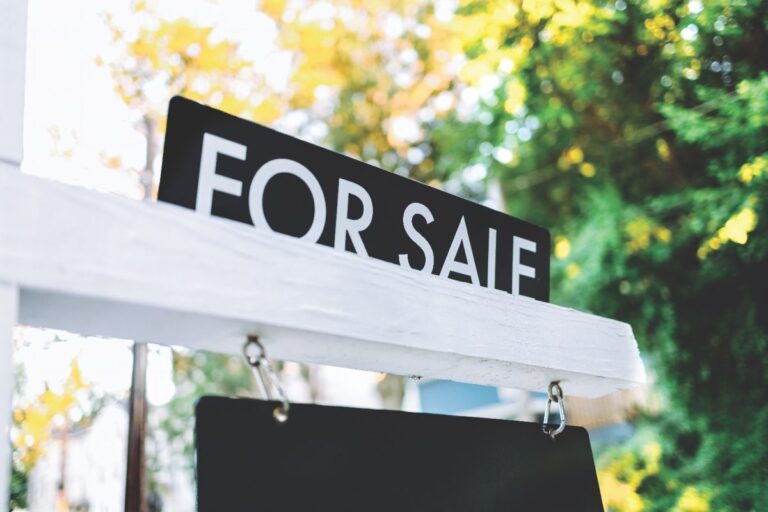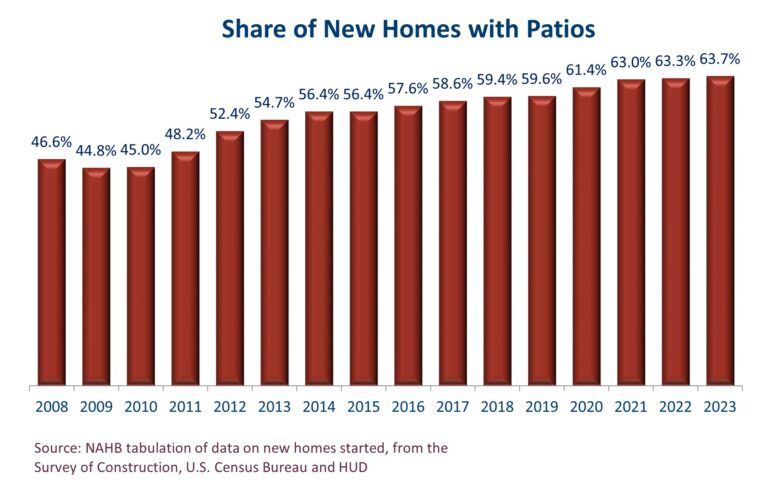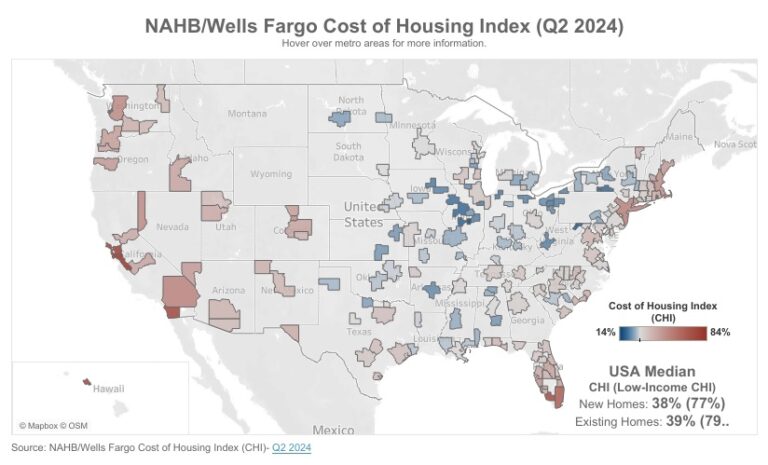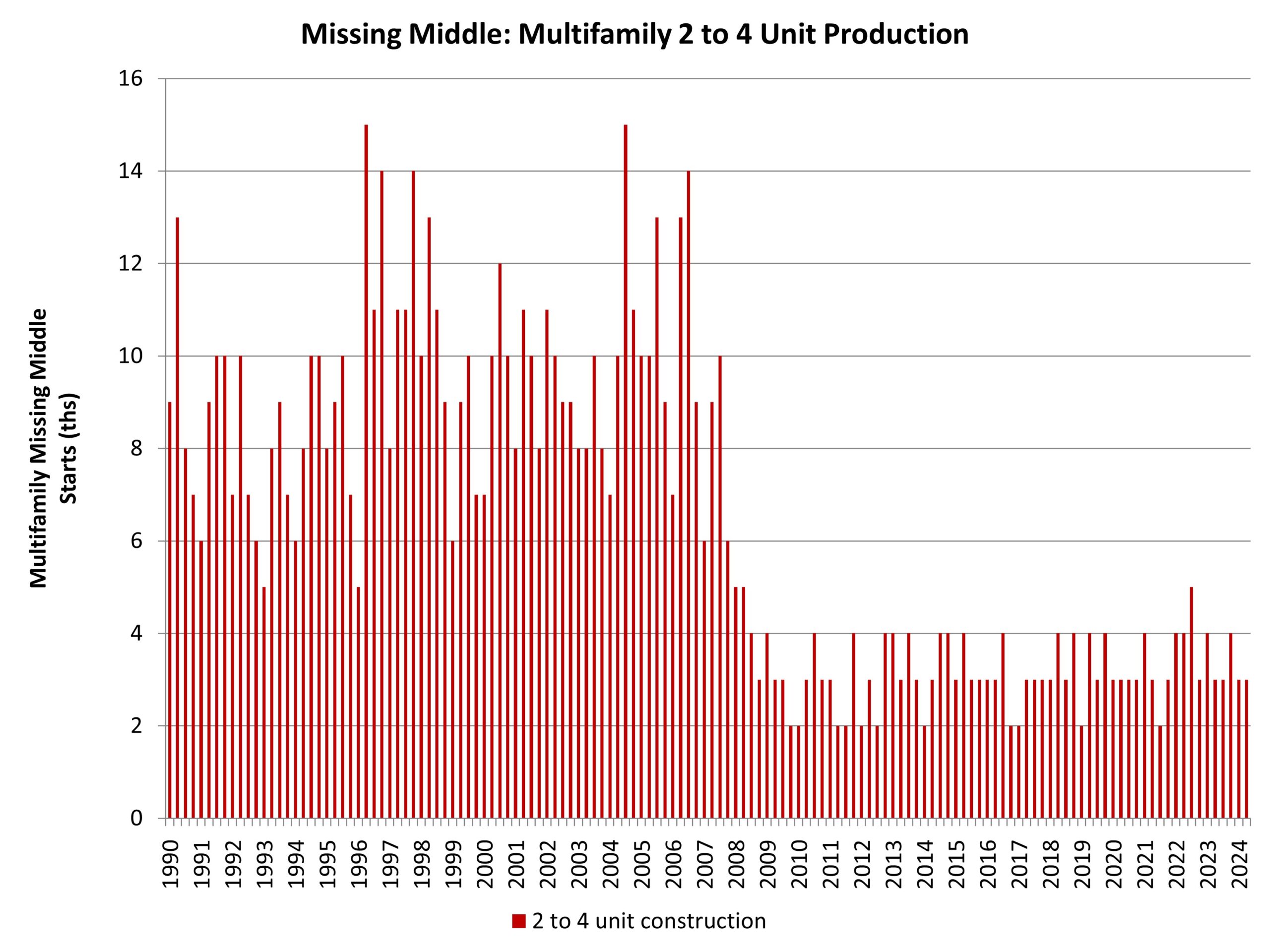In 2023, 66% of newly completed single-family homes featured two-car garages, according to NAHB’s analysis of the Census’s Survey of Construction data. This was the most common parking option across all Census divisions.
By Census division, South Atlantic had the highest share of two-car garages at 72%. Three or more car garages were most popular in the West North Central division (38%), while one-car garages were most frequent in the Middle Atlantic division (22%).”Other” parking options, including carports and off-street parking, were most common in the East South Central division (17%).
Nationwide, the share of new homes with three or more car garages was 17% in 2023. Three or more car garages have been trending downward since the peak of 24% in 2015, decreasing 2% from 2022. One-car garages were present in 8% of new homes, another 2% possessed a carport, and 8% did not have any garage or carport.
As home size increased, the share of homes with one-car garages or “other” parking options decreased. For homes under 1,200 square feet, “other” parking options were most common (72%). As home sizes go over 5,000 square feet, this share drops to just 2%. One-car garages were most common in homes between 1,200 and 1,599 square feet (18%), while only 1% of homes over 5,000 square feet had this feature.
Two-car garages were most prevalent in homes between 1,600 and 1,999 square feet (72%), with the largest share at 81% for homes between 2,000 and 2,399 square feet. For homes between 2,400-2,999 square feet, the two-car garage share fell to 77%. Two-car garages were also the most popular options for homes 3,000-4,999 square feet as well with a smaller share at 58%. Three-car garages were rare in smaller homes (3% for those under 1,200 square feet) but became the most common option (65%) for homes over 5,000 square feet.
Discover more from Eye On Housing
Subscribe to get the latest posts sent to your email.
This article was originally published by a eyeonhousing.org . Read the Original article here. .
